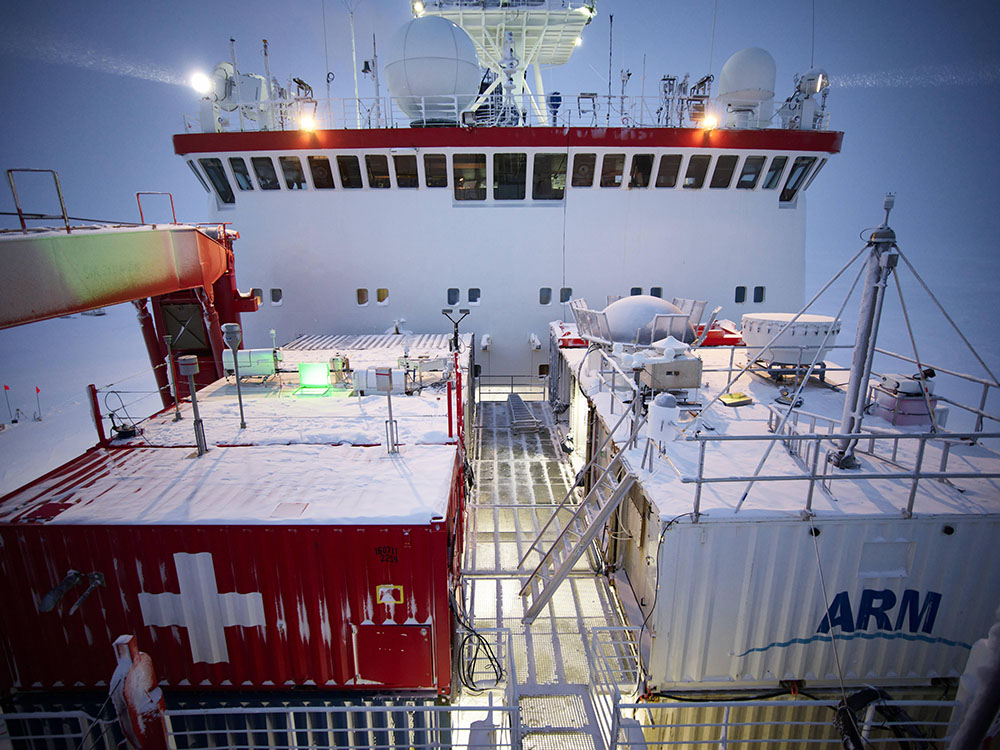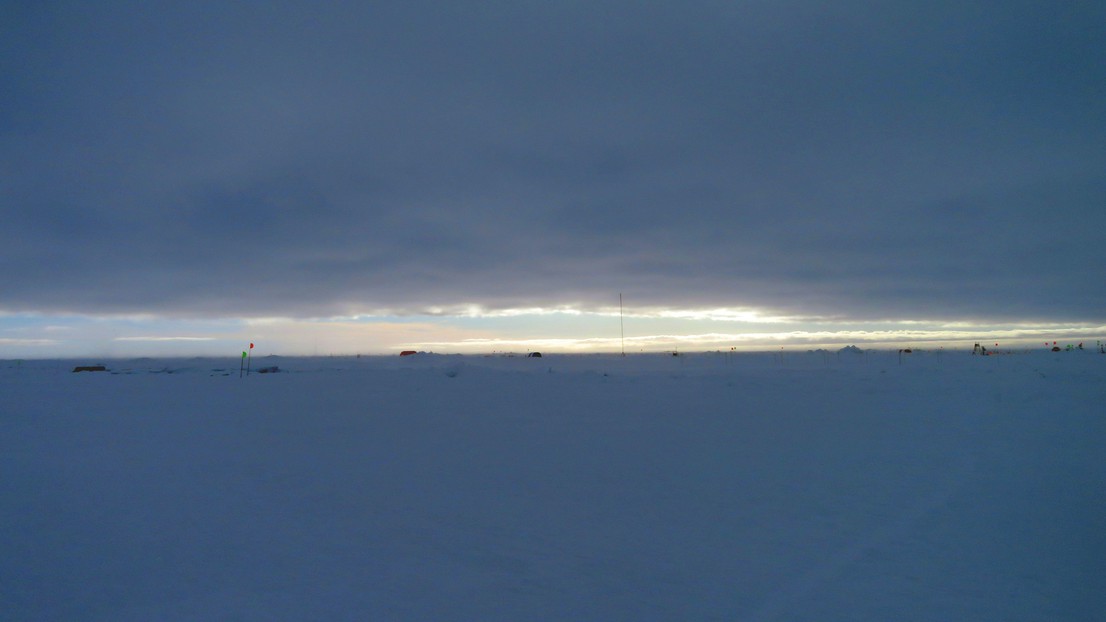A Warm Intrusion in the Arctic Causes Extreme Pollution Levels
Published: 10 November 2022
Arctic air temperature jump reported in new Nature Communications paper using ARM data
The original version of this release is available on the Swiss Federal Institute of Technology Lausanne (EPFL) website.

Weather instruments installed on the R/V Polarstern icebreaker recorded a huge jump in the near-surface air temperature, from minus 30.8 to almost zero degrees Celsius (minus 23.4 to almost 32 degrees Fahrenheit), between April 14 and 17, 2020. This was a record swing that had never been observed in the central Arctic Ocean within the available weather climatology, starting 40 years ago.
The icebreaker was operating under the Multidisciplinary Drifting Observatory for the Study of Arctic Climate (MOSAiC) expedition. Researchers are using data from the yearlong MOSAiC expedition to gain a better understanding of the drivers of accelerated climate change in the Arctic and how it is impacting the region.
One of the scientists onboard the R/V Polarstern was Julia Schmale, a tenure-track assistant professor at EPFL. Schmale is the head of EPFL’s Extreme Environments Research Laboratory (EERL), based at the Alpine and Polar Environmental Research Centre at EPFL Valais Wallis.
Schmale, EERL postdoc Lubna Dada, and 17 MOSAiC colleagues recently published a study in Nature Communications providing important insight into the April 2020 event.
Data collected by the researchers show that a mass of warm air carrying large quantities of pollutants from northern Eurasia had intruded into the high latitudes. Their study is the first to reveal the chemical and microphysical properties of particulate matter swept into the central Arctic by a warm intrusion and to relate these findings to climate-relevant impacts on cloud formation.
The Atmospheric Radiation Measurement (ARM) user facility played a critical role during the MOSAiC expedition by providing a comprehensive instrument suite aboard the R/V Polarstern. As part of the study in Nature Communications, researchers used particle number size distribution, radiation, cloud, and precipitation data from ARM.
Matthew Shupe, ARM’s lead scientist for MOSAiC, is a co-author of the new paper along with Matthew Boyer and Zoé Brasseur, who worked as ARM technicians during MOSAiC.
Shupe’s research funding came from the U.S. Department of Energy’s Atmospheric System Research (ASR).
Surprising Data

“We already knew from weather forecasts that a warm air mass was coming,” says Schmale of the April 2020 event. “It’s a process that occurs regularly in the region. But when we looked at the pollution data we recorded, we saw something that we’d never seen before.”
Schmale therefore checked the readings of the air measurement instruments frequently and noticed that it wasn’t just the temperature increase, but unexpectedly the number, mass concentration, and cloud-forming potential of the advected particles that reached record levels. Her colleagues on the Polarstern were collecting equally surprising data on snow and ice.
Once back at EPFL, Schmale worked with Dada, an atmospheric chemist and physicist, to analyze the event data.
Dada, the lead author of the study, saw that the air pollution concentration in the warm air mass exceeded the typically measured values in Zurich, Switzerland. In contrast to particulate matter in the Swiss city, the air pollution in the Arctic was a lot more acidic, due to sulfuric acid, and contained less nitrate.
“It is troubling to see such data in a region where there is no industry or any other comparable source of pollution,” she says.
What’s more, analyses of radar data showed that the particles contributed to forming optically thick clouds, which act essentially as an opaque blanket, amplifying the temperature increase closer to the ground. This can have important implications for the sea-ice melt later in the season.
For more information, read the new paper on the Nature Communications website.
Keep up with the Atmospheric Observer
Updates on ARM news, events, and opportunities delivered to your inbox
ARM User Profile
ARM welcomes users from all institutions and nations. A free ARM user account is needed to access ARM data.


















